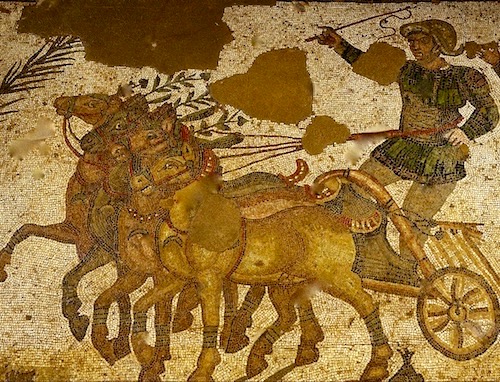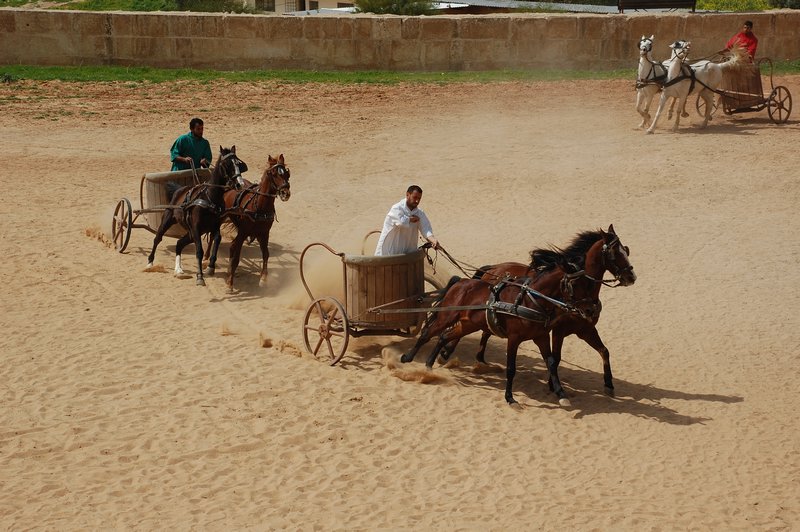

The competitor was the owner of the horses, and the victory went to him, not to the chariot-driver, who might be a slave of the owner.

Whereas most competitors in the Olympics were the athletes involved, so that the man who won the footrace, for example, was the runner himself, the chariot races were different. Noteworthy features of the Olympic hippodrome included mechanical starting gates and a series of bronze dolphins that were used to indicate how many laps had been done and how many remained. A special race-track, the hippodrome, was built to accommodate them. In 680 BC, chariot racing (both two-horse and four-horse teams) was added to the list of Olympic events. The first literary depiction of a chariot race comes from the last book of the Iliad, in which the Greeks conduct a chariot race at the funeral games of Patroclus, the fallen lover of Achilles, and the sport is mentioned in later Greek myths as well. Chariot racing probably evolved out of practicing for warfare. Originally the chariot was a weapon of war, providing a mobile platform from which an archer or spearman could make attacks. The ancient Mediterranean world loved chariot racing. So let’s take a look at Roman chariot racing. Because of this, the scene has had a strong effect on how racing is presented in Hollywood films. Indeed the first cinematic version, the 1907 silent film, was nothing but the chariot race. Timur Bekmambetov) have placed a heavy emphasis on the climactic chariot-racing scene.

All the many iterations of Ben Hur, up to and including the most recent one (2016, dir.


 0 kommentar(er)
0 kommentar(er)
